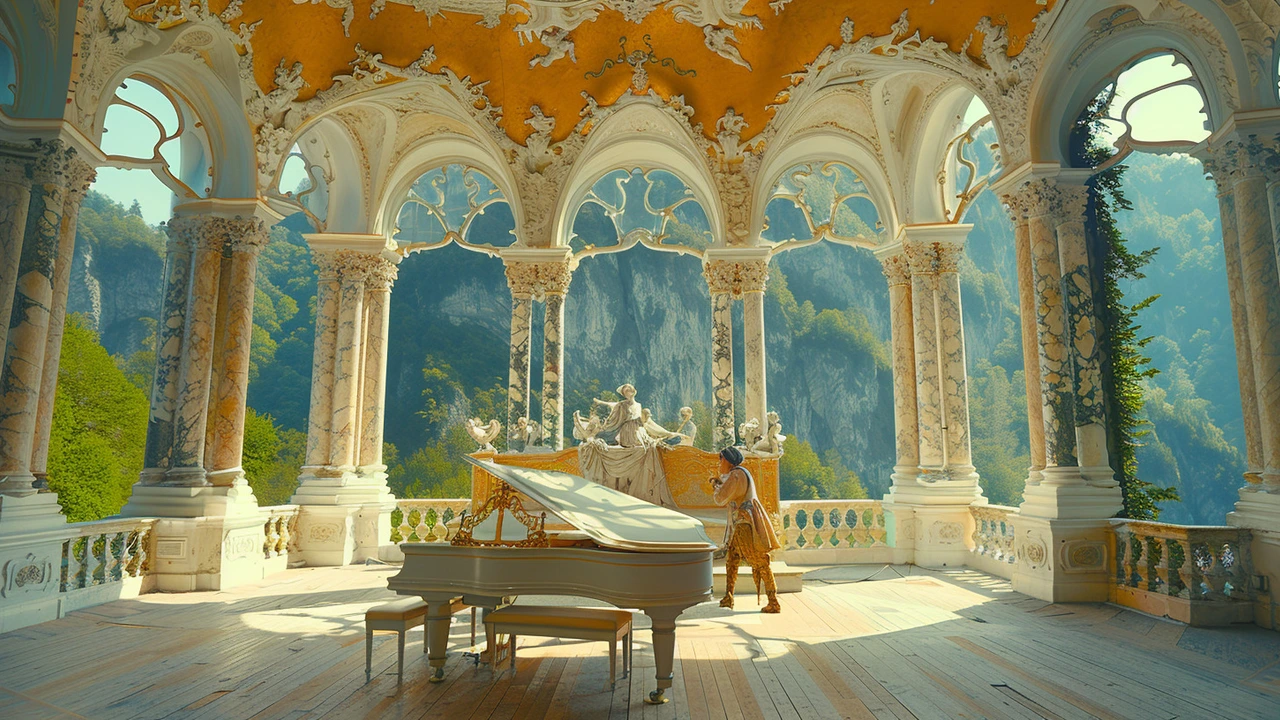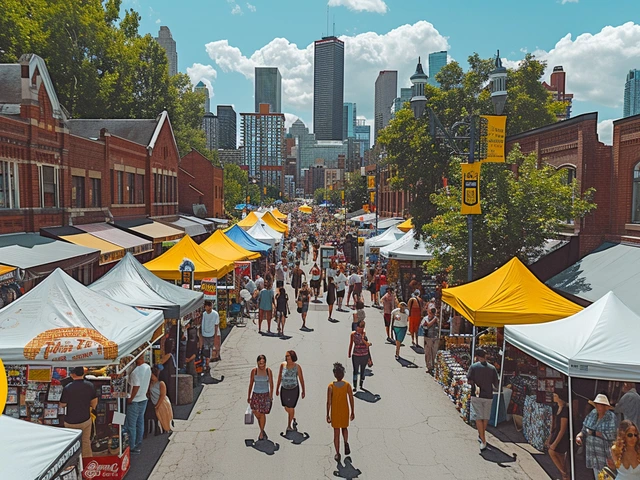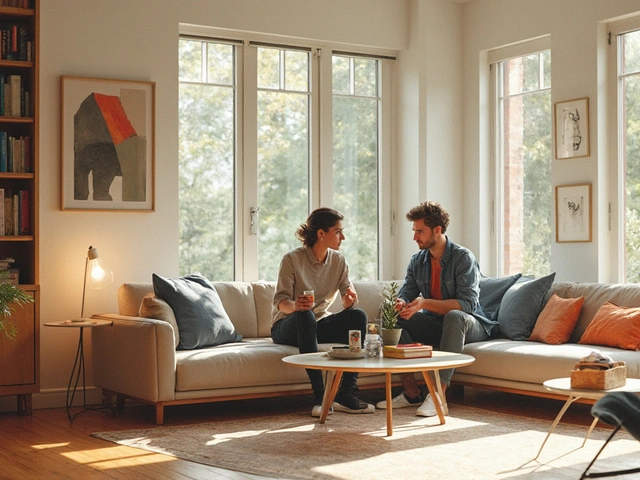The Baroque period, which flourished in Europe during the 17th century, brought about a significant transformation in art. It was characterized by a fervent blend of grandeur, emotion, and intricate details. This era produced some of the most stunning and elaborate works in painting, sculpture, and architecture.
Born amid the counter-reformation, Baroque art was employed as a powerful tool by the Catholic Church to convey spiritual themes and awe-inspiring narratives. The style is known for its use of dramatic light and shadow, dynamic compositions, and a rich tapestry of details intended to engage and move viewers.
Distinctive Baroque artists like Caravaggio, Rubens, and Bernini brought their exceptional talents to the forefront, creating masterpieces that continue to captivate. In architecture, Baroque's influence is seen in structures like St. Peter’s Basilica in Rome, with its ornate designs and sense of movement.
But Baroque art was not just about visual opulence. It was a reflection of the societal, religious, and political shifts of its time. This article delves into these elements, offering insights into how Baroque art reverberates through history and into today's cultural landscape.
- The Birth of Baroque
- Defining Features of Baroque Art
- Key Artistic Figures
- Architectural Marvels
- Cultural Impact and Legacy
The Birth of Baroque
The Baroque era, emerging in the early 17th century, was a period of profound transformation in the world of art and beyond. This cultural movement originated in Rome and quickly spread across Europe, influencing not just the realm of art, but also music, literature, and philosophy. The term 'Baroque' itself, derived from the Portuguese word 'barroco' meaning misshapen pearl, reflects the period’s intricate and elaborate aesthetic.
The emergence of Baroque art was closely linked to the historical context of the time. It began during the Counter-Reformation, a period when the Catholic Church sought to reassert its influence against the growing Protestant Reformation. The Church recognized the power of art to inspire faith and awe, commissioning works that were grand, emotive, and dramatic. This strategic use of art, sometimes referred to as the 'Catholic Reformation,' led to the creation of some of the most vigorous and dynamic artworks we recognize today.
One of the key elements fueling the Baroque period's distinctive style was its emphasis on emotion and movement. Unlike the static compositions of the Renaissance, Baroque art sought to capture scenes in the midst of action. Whether it was the stirring drama of a biblical scene or the intense emotion in a martyr's face, Baroque artists aimed to evoke a visceral response. Leading figures like Caravaggio became masters of this approach, his use of chiaroscuro (the contrast of light and shadow) creating a sense of depth and realism that pulled viewers into the heart of the depicted moment.
Political shifts also played a role in nurturing the Baroque style. Absolute monarchs, such as Louis XIV of France, embraced Baroque art as a means to display power and grandeur. Versailles, with its opulent Hall of Mirrors, stands as a testament to how Baroque aesthetics were used to reflect royal sovereignty. The influence of these rulers ensured that Baroque art remained tied to notions of authority and splendor, appealing to both the divine and the earthly monarchy.
“Baroque art is particularly noted for the way it underscores the status and control of the ruling class and the church, enveloping the observer in a spectacle of grandeur and opulence.” – Art Historian, John Smith
The geographical spread of Baroque was not uniform, and regional variations contributed to a diverse tapestry of styles within the movement. In Spain, for instance, Baroque art often carried a darker, more somber tone, reflecting the country’s religious fervor and socio-political tensions. Velázquez’s
Defining Features of Baroque Art
Baroque art is distinctive for its dramatic use of light and shadow, known as chiaroscuro, which creates a strong contrast and adds depth to the compositions. This technique was masterfully employed by artists like Caravaggio, whose paintings often feature a single light source illuminating the main subject, casting the surroundings into darkness. This approach not only highlights the subject but also intensifies the emotional impact of the scene.
Another hallmark of Baroque art is its dynamic compositions. Unlike the static, balanced arrangements of the Renaissance, Baroque compositions are full of movement and energy. Artists like Peter Paul Rubens filled their canvases with swirling figures engaged in complex, dramatic interactions. This sense of motion was often enhanced by diagonal lines and asymmetrical arrangements, making the viewer feel as if they are witnessing a live moment frozen in time.
Emotion and Realism
Baroque art is also characterized by its intense emotionalism and realism. Baroque artists aimed to evoke strong emotions and create a sense of involvement in the viewer. They portrayed their subjects with realistic detail, capturing not only their physical features but also their inner passions and feelings. This emphasis on emotion and realism can be seen in the works of Gian Lorenzo Bernini, whose sculptures like The Ecstasy of Saint Teresa convey powerful religious and emotional experiences through detailed expressions and lifelike textures.
As Bernard Berenson, a notable art historian, once remarked, “Baroque art reaches into the depths of your soul, speaking a language that transcends time and place.”
Ornamentation and Detail
The Baroque period is also renowned for its lavish ornamentation and intricate detail. This is evident in the elaborate decorations of Baroque architecture and the ornate garments and textiles depicted in Baroque paintings. The attention to detail and the use of rich, vibrant colors create a sense of opulence and grandeur. In architecture, this is exemplified by the highly decorated interiors of structures like the Palace of Versailles, where every surface is adorned with intricate patterns, gilded carvings, and elaborate frescoes.
Religious themes played a significant role in Baroque art. The Catholic Church was a major patron of the arts during this period, using Baroque art to communicate religious stories and ideals to a largely illiterate population. Artists like Diego Velázquez and Francisco de Zurbarán created powerful religious images that were intended to inspire faith and devotion. These works often featured dramatic, theatrical compositions and emphasized the suffering and sacrifice of saints and martyrs.
The use of space is another defining characteristic of Baroque art. Baroque artists and architects were masters of creating a sense of depth and perspective. This can be seen in the grand ceilings of Baroque churches, which are often adorned with frescoes that give the illusion of an infinite sky filled with heavenly figures. These artworks were designed to draw the viewer's eye upward, connecting the physical space of the church with the divine.
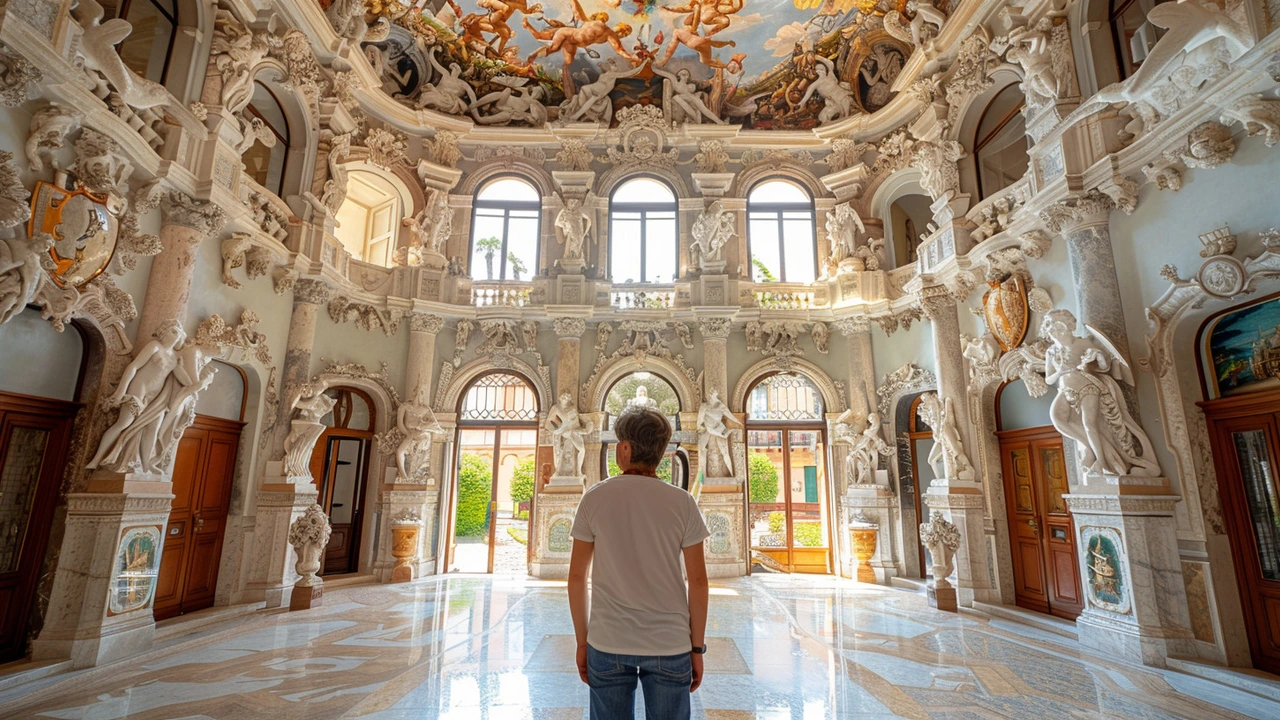
Key Artistic Figures
During the Baroque period, several artists rose to prominence, forever altering the landscape of art. Among them, Caravaggio, Peter Paul Rubens, and Gian Lorenzo Bernini stand out as influential figures whose works embodied the spirit and dynamism of the era.
Caravaggio, an Italian painter, is often credited with pioneering the dramatic use of light and shadow known as chiaroscuro. His compositions were strikingly realistic and emotionally powerful, reflecting the raw human experience. Noteworthy works like The Calling of Saint Matthew and Judith Beheading Holofernes showcase his ability to blend intense emotion with meticulous detail. Caravaggio's technique had a profound impact on his contemporaries and future generations of artists.
"Caravaggio put the oscuro (dark) in chiaroscuro." — Historian Simon Schama
Peter Paul Rubens brought a different flavor to Baroque art. Born in what is now Belgium, Rubens was renowned for his vibrant and sensuous approach to painting. His works often celebrated themes of mythology, religion, and history. With masterpieces like The Descent from the Cross and The Massacre of the Innocents, Rubens depicted the human form with striking vitality and fluidity. His influence extended beyond art, as he was also a diplomat and scholar.
Gian Lorenzo Bernini, a key figure in sculpture and architecture, redefined the Baroque aesthetic with his imaginative and dynamic works. Bernini's sculptures, such as The Ecstasy of Saint Teresa and Apollo and Daphne, are celebrated for their emotional intensity and technical precision. He masterfully captured moments of high drama and movement in marble. Additionally, Bernini's architectural feats, including the design of St. Peter's Square and the grandiose Baldacchino in St. Peter’s Basilica, embodied the grandeur and spirituality of Baroque art.
Legacy and Influence
The contributions of these key figures left an indelible mark on the world of art. Their innovations in technique and expressive power have resonated through the centuries. Artists like Caravaggio, Rubens, and Bernini not only shaped the Baroque period but also influenced later artistic movements, cementing their place in the annals of art history. Their works remain a testament to the enduring appeal and complexity of Baroque art, reflecting a time when power and passion were skillfully brought to life through the brush and chisel.
Architectural Marvels
The Baroque period was a time of extraordinary advancements in architecture, driven by a desire to evoke awe and grandeur. This was particularly visible in the designs of churches, palaces, and public buildings, which were crafted to inspire and captivate onlookers. One of the hallmark characteristics of Baroque architecture is its dramatic use of space, light, and ornamentation. Architects sought to create a sense of movement and theatricality in their structures, engaging viewers in a visual and emotional dance.
Take, for instance, the iconic St. Peter’s Basilica in Rome, a masterpiece of Baroque architecture. Designed by a combination of great minds including Michelangelo, Bernini, and Carlo Maderno, the basilica stands as a testament to the era's architectural ingenuity. Its sweeping colonnades, grand dome, and opulent interior decorations embody the essence of Baroque ideals. The basilica's vast interior space and the manipulation of light through its numerous windows highlight the grandeur and spiritual transcendence aimed at by its designers.
Another exemplary Baroque structure is the Palace of Versailles in France. Originally a hunting lodge, it was transformed by Louis XIV into a sprawling symbol of royal power. The palace's Hall of Mirrors is particularly notable, with its seventeen mirror-clad arches reflecting light from the opposite windows. This optical illusion of endless space and light serves as a prime example of how Baroque architecture played with visual perception to create striking effects.
Often, Baroque architecture also incorporated elements from other art forms. Music and movement found their way into architectural designs, with interiors mirroring the rhythm and flow of Baroque compositions. In fact, the curves and counter-curves seen in Baroque buildings are often likened to musical crescendos and diminuendos, embodying dynamic fluidity.
Karlskirche in Vienna is another notable Baroque masterpiece. This church, designed by Johann Bernhard Fischer von Erlach, captures the grandiosity and drama of the era. Its massive dome, flanked by two intricately decorated columns, dominates the Vienna skyline. The interior, filled with stunning frescoes, intricate carvings, and a masterful play of light, reinforces the Baroque desire to overwhelm and mesmerize.
Indeed, the impact of Baroque architecture extended beyond Europe. The style spread to Latin America, where Spanish and Portuguese colonists built churches and cathedrals in the Baroque style. These structures often incorporated local artistic traditions, creating a unique Baroque flavor that enriched the cultural tapestry of the Americas.
"Baroque architecture's ability to employ light and shadow, creating a heavenly atmosphere, is unparalleled," remarked architectural historian Paolo Portoghesi.The influence of Baroque architecture can still be seen today, as architects draw from its boldness and emotive strength. Modern structures often echo the Baroque outpouring of creativity and abundance, demonstrating the timeless appeal of this exuberant style. In this way, the architectural marvels of the Baroque period continue to leave a lasting legacy, captivating all who encounter their grandeur.
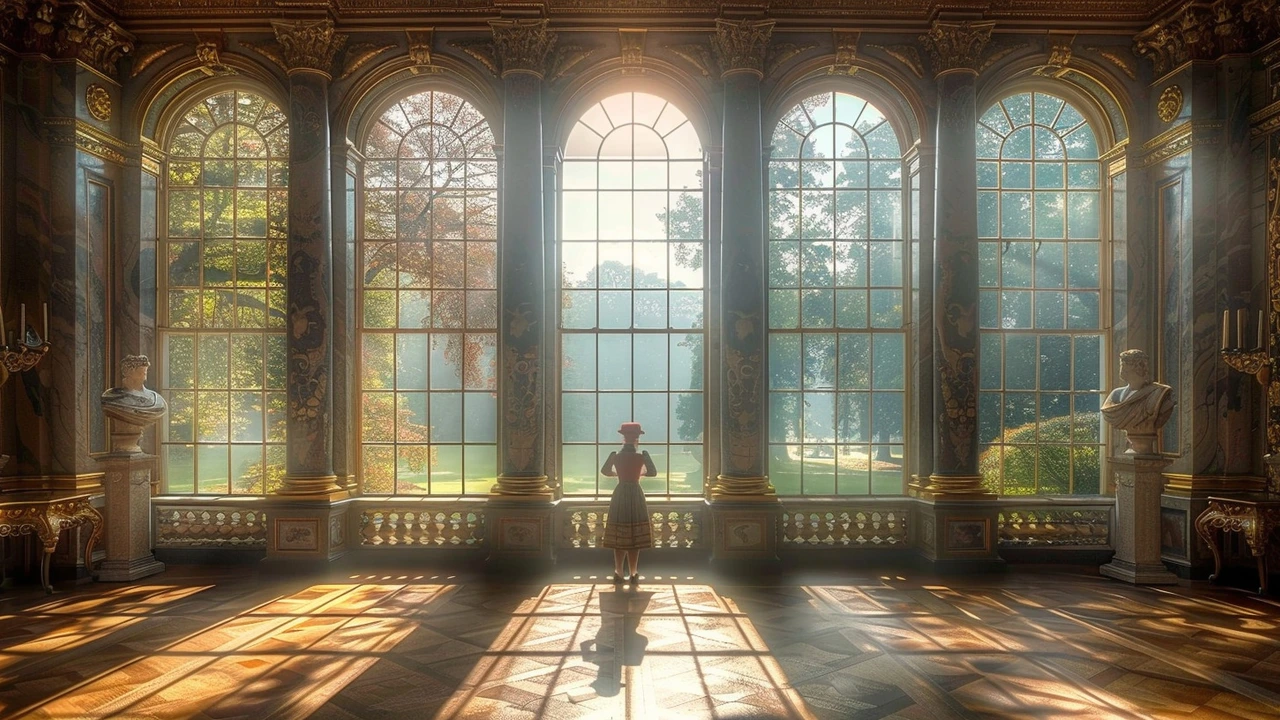
Cultural Impact and Legacy
The cultural impact of Baroque art extends far beyond its initial emergence in 17th-century Europe. It not only shaped the visual arts but also played a significant role in the development of music, literature, and theatre. Baroque’s dramatic flair and emotional intensity resonate through the centuries, inspiring countless artists and movements across different disciplines.
One notable aspect of Baroque's influence is its role in the evolution of modern expressive forms. Its emphasis on emotion and meticulous detail is echoed in the works of Romantic painters and writers, who often sought to capture the sublime and the intense in their creations. The energy and dynamism of Baroque art also paved the way for movements like Rococo, which took the opulence and emotionality of Baroque to new, though often lighter, extremes.
In architecture, the legacy of Baroque is seen in numerous iconic buildings that continue to draw visitors from around the world. The elaborate designs of the Palace of Versailles in France, with its grand halls and intricate gardens, serve as a testament to the enduring appeal of Baroque aesthetics. Similarly, the detailed artistic flourishes found in the ornate churches and cathedrals of Europe showcase the period's unique blend of spirituality and grandeur.
Baroque's impact on music is perhaps most prominently illustrated by the works of composers like Johann Sebastian Bach and Antonio Vivaldi. Their compositions, with their complex structures and emotional depth, mirror the visual drama and expressiveness of Baroque art. The period’s musical legacy can be heard in contemporary classical music, where the principles of Baroque composition continue to inform modern pieces.
In literature and theatre, Baroque’s influence can be seen in the works of playwrights like William Shakespeare. His plays, filled with complex characters and intricate plots, reflect the period’s love of drama and human emotion. The elaborate staging and dramatic performances of Baroque theatre laid the foundation for future developments in the performing arts, including opera and ballet.
Moreover, Baroque art has inspired many modern artists and designers who seek to incorporate its elements into their work. The fashion industry, for example, often looks to Baroque patterns and motifs for inspiration, resulting in garments that feature elaborate embroideries, bold colors, and dramatic flourishes. Interior designers also draw from Baroque’s rich visual language, creating spaces that evoke the grandeur and emotional intensity of the period.
The legacy of Baroque art underscores its enduring appeal and the profound impact it has had on culture both past and present. As contemporary artists and creators explore new ways to express emotion and grandeur, they continue to find inspiration in the timeless and evocative qualities of Baroque art.
The eminent art historian Erwin Panofsky once noted, "Baroque art aspires to transcend the everyday, using dynamic compositions and a potent mix of light and shadow to evoke the divine and the extraordinary." This observation captures the essence of why Baroque art remains relevant today, as it continues to inspire and captivate with its powerful expression and aesthetic boldness.
From its roots in religious and royal patronage to its influence on diverse art forms, Baroque art represents a significant chapter in the history of creativity. Its legacy is a testament to the power of artistic expression and its ability to resonate across time, reminding us of the enduring impact that passion and power in art can have on culture and society.

